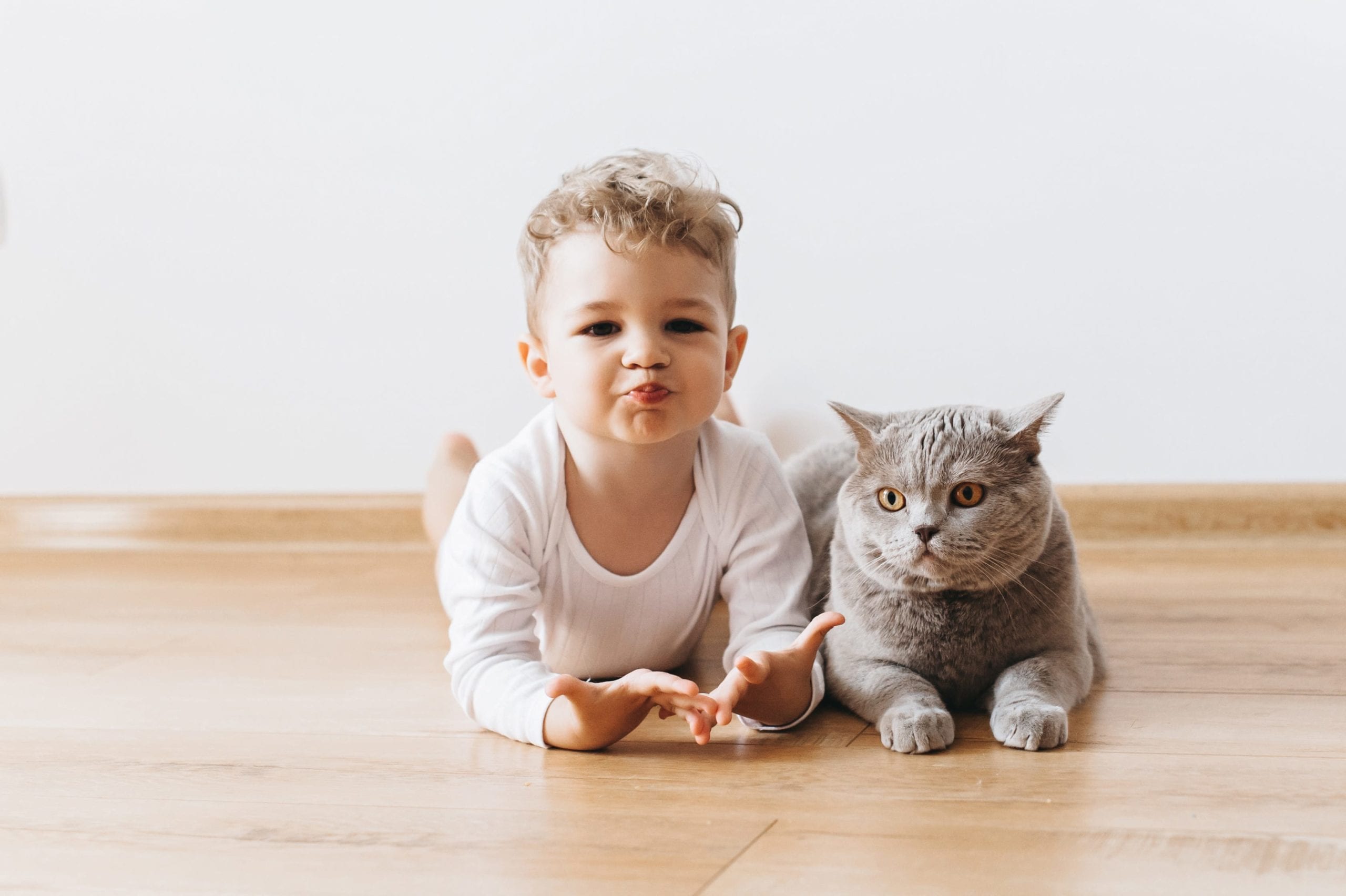The arrival of a baby requires a number of adjustments to be made to the home, but it can
be easy to forget that you also need to seriously consider whether or not any pets you have
are going to pose a threat to your child.
As much as we love our pets, children come first but luckily, as long as your pet has the right
disposition there are plenty of ways for you to ensure an inclusive environment for
everyone. Cats are one of the most highly disputed pets when it comes to this, so here,
we’ve suggested a number of actions you can take to avoid having to get rid of your feline
friend.
Before the Baby Arrives
Before the baby arrives, there a number of things you can do to get the cat used to its
presence. There will be a lot of changes to the environment in which your cat lives, which
for cats can be very distressing as they are creatures of habit. Plan ahead and begin
preparing your home in advance by adding new pieces of furniture one by one, and the cat
will soon get used to the gradual change.
Things like baby bouncers will be particularly enticing for cats and they may consider them
to be new toys, so this is also a good opportunity to teach them not to go near anything that
the baby will be spending time in. It’s also a good idea to get them a few of their own new
toys to distract them, like cat play tunnels.
As well as these new sights to see, your cat will have to get used to new sounds and smells
which can also be overwhelming when appearing all at once. Before the baby’s arrival, try
using any products for them on yourself so that the smells are not new or enticing for the
cat when the baby comes, and you can even go as far as playing the sound of a baby’s cry so
that when the time comes for the real thing, the cat is not startled.
Treatment of Cat
Once your baby arrives, you need to maintain your usual treatment of your cat rather than
it taking a back seat, this will ensure that it is experiencing consistency and therefore will
not panic and behave differently. Give it just as much or as little attention as usual and
keep up with all of its usual care routines, such as the time you feed it and the time it can
come and sit with you.
Other checks must be continued too for the benefit of your cat and your child, for example,
flea checks and keeping their claws short. If you neglect to keep an eye on their health, they
could end up being in pain which will make them act more defensively. It is very important
that your cat has child-free zones for sleeping, eating, and for their litter tray to go, as well
as plenty of escape routes.
Treatment of Child
At first, all you can do in terms of your child is to keep their nursery door firmly closed while
they sleep, as cats do tend to look for warm cozy places to curl up which could be dangerous
in this instance. No matter how much you trust your cat, you will need to constantly
supervise them around your child as no animal is one hundred percent predictable. As your
child grows older, you will be able to explain important rules to them regarding the cat, for
example, not to touch them in areas that trigger their defense mechanisms, and to treat it
with kindness and compassion.
In most circumstances, it is safe to keep your cat when you have a child unless it has a
particularly aggressive disposition, however, it is very important that certain steps are taken
before and after the baby arrives to ease the transition. For a more in-depth look at why it is
so important to supervise your children with your pets, take a look at ‘How and Why to
Watch Your Pet’.






